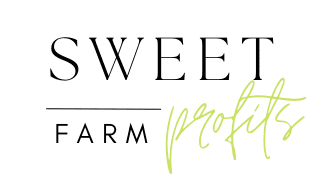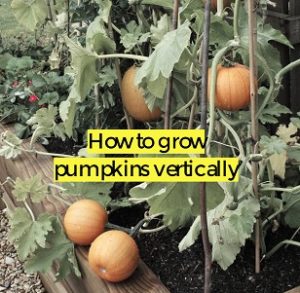Pumpkins, with their vibrant orange hue and associations with autumn, have become iconic symbols of the season. Whether carved into spooky jack-o’-lanterns or transformed into delicious pies, the popularity of pumpkins extends far beyond Halloween. However, like all plants, pumpkin vines have a natural life cycle, and understanding when they stop producing and the underlying reasons behind it can be valuable knowledge for gardeners and pumpkin enthusiasts. In this blog, we’ll explore the fascinating journey of pumpkin plants, from germination to when pumpkin plants stop producing, shedding light on the factors influencing their growth and the ultimate stopping of fruit production.
factors influencing pumpkin growth and stopping fruit production
Germination and Early Growth
The life cycle of a pumpkin plant begins with the germination of its seeds. Given the right conditions—adequate moisture, warmth, and soil nutrients—the seeds sprout and send out their first pumpkin roots and shoots. As the pumpkin plant continues to grow, it develops sturdy vines and large leaves that play a vital role in photosynthesis, enabling the plant to produce energy from sunlight.
Flowering and Fruit Production
Around 6 to 8 weeks after germination, pumpkin plants typically reach the flowering stage. Pumpkin vines bear separate male and female flowers. The male flowers usually appear first, followed by the female flowers. Pollination occurs when bees and other pollinators transfer pollen from the male to the female flowers, leading to the formation of the pumpkin fruit. Not all flowers will develop into pumpkins; some may wither and fall off without setting fruit.
Peak Production Period
Once pollination is successful, the pumpkins begin to grow rapidly. During the peak production period, which generally occurs during the midsummer months, pumpkin plants actively produce new fruits. The vine lengthens, and multiple pumpkins can be seen developing at different stages simultaneously.
Factors Affecting Production
Several factors influence the productivity of pumpkin plants. Adequate sunlight, water, and nutrient-rich soil are essential for sustaining healthy growth and fruit development. In addition to environmental factors, the pumpkin variety itself, pest and disease management, and the presence of pollinators can significantly impact the plant’s ability to produce fruits and how many pumpkins it will produce.
End of the Productive Phase
As summer draws to a close and the days grow shorter, pumpkin plants start to prepare for the eventual end of their productive phase. The energy focus of the plant shifts from fruit production to seed development and storage. The mature pumpkins begin to ripen, changing their color and developing a tough rind, which protects the seeds inside.
Harvest Time
The timing of when pumpkin plants stop producing fruits is usually associated with the onset of fall. Gardeners and farmers often wait for the pumpkins to reach full maturity before harvesting them. Once harvested, pumpkins can be stored for an extended period, providing a source of joy and nutrition during the colder months.
Why Has My Pumpkin Stopped Growing?
Growing pumpkins can be a rewarding and enjoyable experience, but it can also be frustrating when your pumpkin plant suddenly stops growing.
There are several reasons why this might happen, and understanding these factors can help you take the right steps to revive your plant and encourage further growth.
1. Lack of Pollination
One of the most common reasons for halted pumpkin growth is inadequate pollination. Pumpkins have separate male and female flowers, and for successful fruit development, pollen must be transferred from the male to the female flowers. If there’s a shortage of pollinators, like bees, in your garden or unfavorable weather conditions during the flowering period, your pumpkins may not receive enough pollen for proper growth.
Solution: To promote pollination, consider planting flowers that attract pollinators near your pumpkin patch. You can also hand-pollinate the flowers by gently transferring pollen from the male to the female flowers using a small brush or cotton swab.
2. Environmental Factors
Pumpkins thrive in warm and sunny conditions. Sudden temperature drops, cold weather, or extended periods of cloudy days can slow down or halt growth. Additionally, extreme heat without adequate water can cause stress to the plants and affect their growth.
Solution: Monitor the weather and protect your pumpkin plants during extreme conditions. Provide shade during scorching heat and water the plants consistently during dry spells to maintain soil moisture.
3. Watering Issues
Proper and consistent watering is crucial for healthy pumpkin growth. Irregular watering, such as long periods of drought followed by heavy watering, can stress the plants and lead to stunted growth or fruit abortion.
Solution: Implement a regular watering schedule and ensure the soil remains consistently moist. Use mulch around the base of the plants to retain moisture and reduce weed competition.
4. Nutrient Deficiencies
Pumpkins are heavy feeders and require nutrient-rich soil to thrive. A lack of essential nutrients, particularly nitrogen, phosphorus, and potassium, can hinder growth and result in smaller or underdeveloped fruits.
Solution: Conduct a soil test to determine any nutrient deficiencies. Amend the soil with organic matter and balanced fertilizers to provide the necessary nutrients for the pumpkin plants.
5. Pest and Disease Problems
Pests and diseases can wreak havoc on pumpkin plants, weakening them and affecting fruit production. Common pests like aphids, squash bugs, or cucumber beetles, as well as diseases like powdery mildew or bacterial wilt, can be detrimental to pumpkin growth.
Solution: Regularly inspect the plants for signs of pests and diseases. If detected early, use appropriate organic pest control methods or disease management techniques to mitigate the damage.
6. Maturity and Ripening
If your pumpkin has reached full maturity and is ripening, it is normal for the plant to stop producing new growth. At this stage, the plant’s energy shifts from vegetative growth to seed development, leading to the formation of a hard rind.
Solution: Allow the mature pumpkin to ripen on the vine until fully developed before harvesting. This ensures the fruit reaches its maximum size and flavor.
Conclusion
When your pumpkin plant stops growing, it can be disheartening, but don’t worry – there are several factors to consider and simple solutions to try. Lack of pollination, environmental factors, watering issues, nutrient deficiencies, pest and disease problems, and natural maturity are common causes of halted pumpkin growth. By addressing these issues promptly and providing the right care, you can encourage your pumpkin plant to resume growth and, hopefully, yield a fruitful harvest. Gardening is a learning process, and understanding these challenges will empower you to become a more successful pumpkin grower in the future. Happy pumpkin growing!



